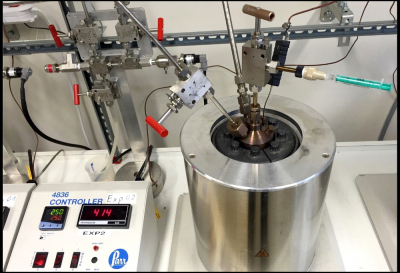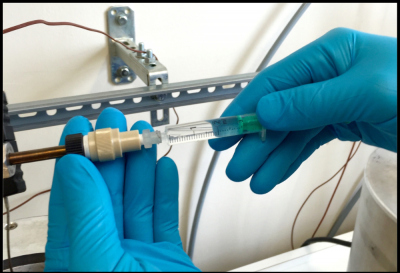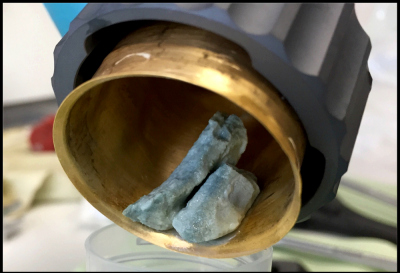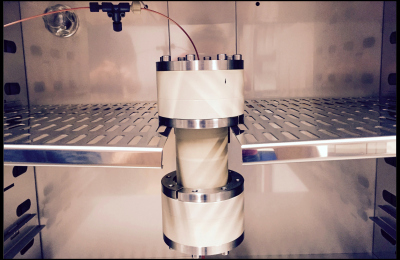- Startseite
- Christian Hansen
- Hydrothermal Lab
Hydrothermal Lab
Dickson-type reactor
This flexible reaction cell setup was initially described by Dickson et al. (1963) and later significantly modified by Seyfried et al. (1979, 1987). It can be utilized to investigate equilibrium processes that occur within hydrothermal systems. Fluid and solid reactants reside within a corrosion resistant flexible reaction cell made of gold or titanium (Wu et al. 2016). Pressure and temperature can be adjusted independently up to a level of 50 MPa and 400 °C. The setup allows for concomitant fluid sampling and solid reactants can be recovered upon termination of an experiment. Four customized autoclave systems are available in the Hydrothermal Lab (HyLab) of the Petrology of the Ocean Crust research group.
- Dickson FW, Blount CW and Tunell G (1963): Use of hydrothermal solution equipment to determine the solubility of anhydrate in water from 100°C to 275°C and from 1 bar to 1000 bars pressure. American Journal of Science. | doi:10.2475/ajs.261.1.61 |
- Seyfried WE, Gordon PC, Dickson FW (1979): A new reaction cell for hydrothermal solution equipment. American Mineralogist. |PDF|
- Seyfried WE, Janecky DR and Berndt ME (1987): Rocking autoclaves for hydrothermal experiments. II. The flexible reaction-cell system. In: Hydrothermal Experimental Techniques. Wiley-Interscience Publications. |PDF|
- Wu SJ, Cai MJ, Yang CJ and Li KW (2016): A new flexible titanium foil cell for hydrothermal experiments and fluid sampling. Review of Scientific Instruments. | doi:10.1063/1.4963700 |



X-Ray transparent flow-through reactor
This flow-through setup was designed under the lead of Dr. Wolf-Achim Kahl and enables percolation experiments investigating the interdependencies of porosity, permeability, fluid flow rates as well as pore space geometry and their feedback relationship in the course of dissolution and precipitation reactions (Kahl et al. 2016). Rock cores (up to ø 19 mm) or powder samples are confined within an X-ray transparent flow-trough reaction cell made of PEEK (polyetheretherketone). Temperature can be adjusted up to a level of 200°C, while a fluid reactant can be forced through the solid reactant within the cell at pressures up to 10 MPa. While fluid samples can be drawn at any time, in addition, reaction progress can be monitored through repeated microtomographic scans (µ-CT). Three flow-through setups are available in the Hydrothermal Lab (HyLab) of the Petrology of the Ocean Crust research group.
- Kahl, W.-A., Hansen, C., and Bach, W. (2016) A new X-ray-transparent flow-through reaction cell for a μ-CT-based concomitant surveillance of the reaction progress of hydrothermal mineral–fluid interactions. Solid Earth, 7, 651-658.
| doi:10.5194/se-7-651-2016 |



